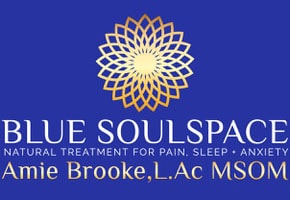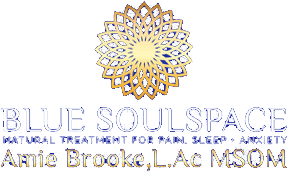As an acupuncturist, treating pain is my profession. Over the past 25 years I’ve witnessed desperation and resilience as patients come to me looking for help to relieve pain preventing them from activity, sleep and the simple joys we take for granted when we are pain-free. A few years ago after a ski accident and major knee surgery I became the patient – suddenly pain management was my own daily personal experience. It also became an unanticipated opportunity to explore some new pain relief solutions first-hand.
Not only does pain slow you down, it draws you into your body with a new awareness like nothing else can. Extreme physical pain takes your attention away from all the mundane worries of life and refocuses it to one thing: make this go away! It’s no big surprise we have an opioid and prescription drug crisis in our country. So many people are looking for a quick escape from their physical and psychological pain so they can experience the human drive for pleasure. And it’s not easy to advise someone to get off their medications when they are hurting unless you give them a viable pain relief alternative.
Natural pain relief is not only a good idea, but is now a necessity. The FDA, CDC, and The American College of Physicians (ACP), etc. all recommended non-drug approaches as a first-line treatment for managing pain and effective January 1, 2018, The Joint Commission requires accredited hospitals and facilities to provide non-pharmacologic therapies for pain. Among the main non-drug therapies, only acupuncture stimulates the production of your body’s own opioids.
After my knee surgery I received regular acupuncture treatments to manage pain and accelerate my healing. Acupuncture reduced inflammation and pain in my knee, increased circulation, broke down scar tissue, shortened my recovery time after physical therapy, and also provided an extra boost of pain relief immediately after surgery that even the strongest narcotics didn’t touch.
At a recent Academy of Integrative Pain Management meeting, research and data was presented by a clinical professor of anesthesiology at UCSD showing unprecedented advances in the use of acupuncture to treat chronic pain conditions. As the western medical community relies on research and data to make informed decisions on care, it’s important that studies on acupuncture and integrative medicine modalities are reaching more physicians. I worked as part of a sports medicine orthopedic group in the Bay Area and was encouraged to see how doctors in our practice were open and responsive to recommending acupuncture and non-pharmaceutical therapies to their patients, particularly those with chronic pain.
Other forms of alternative pain relief now in the spotlight include CBD and cannabis products. Thirty states and the District of Columbia have legalized the use of medical cannabis for chronic pain, nausea, glaucoma, migraine and more, and the US government is now softening rules for marijuana research to make it easier to grow the plant for scientific study. Like acupuncture, there is now expanded research revealing the efficacy of CBD and cannabis for pain relief. For example, researchers at McGill University conducted a clinical trial and found that cannabis helps people with chronic nerve pain due to injury or surgery feel less pain (it appears to be particularly effective at treating neuropathic pain). For many people, specific strains of cannabis help to decrease anxiety and insomnia, making it a viable part of a pain-reduction protocol. When you lower stress and cortisol levels and sleep more soundly, the body heals and recovers faster.
Many health problems and symptoms I see in our clinic are often the result of long-term pharmaceutical use, so I’m excited to add medical cannabis as another herbal remedy in our natural pharmacy recommendations. I can advise you of which products to try for pain and what delivery systems work best, such as vaporizers, tinctures, teas and edibles. Similar to all medications, each individual responds differently to the variety of cannabis products so often you need to test out a few to see which works best for your condition. Some are more stimulating, while others are sedative.
The CBD products I used during my post-operative recovery were extremely effective in managing my pain, sleep and mood. They helped get me off narcotics after the first few days and significantly reduced my use of over-the-counter anti-inflammatory pain meds I know to be highly addictive and cause gastrointestinal and liver problems with long-term use, not to mention nasty side effects such as dizziness, constipation and rashes.
You may feel very different using cannabis products depending on your level of pain. One CBD tincture I tested before surgery put me right to sleep and then with my intense pain post-surgery it just served to ease some of my discomfort. Some CBD remedies also contain more of the psychoactive component THC so you need to read labels and learn your tolerance and response to various dosages. Start by taking very small amounts initially (at home is best) so you can prevent severe, unwanted reactions.
I hope as medical cannabis research and distribution expands in the US and more people safely use the plant under the guidance of professionals and not just for recreation purpose, some of the social stigma behind it will diminish – along with widespread opioid use. As a parent of teenagers I have great concern over the misuse and abuse of any drug, especially with youth, but I also now recognize cannabis as a far superior alternative to prescription drugs and alcohol from a health perspective, and perhaps economically as well. A hot topic, indeed and similar to new research using psychodelics for mental illness.
It’s also interesting to recognize that in an Advil-popping culture we have become accustomed to pre-empting and numbing our pain so we can push through activity, often at the expense of not listening to what our body is trying to tell us (perhaps to take a day off, rest and heal?). During my knee rehabilitation I limited my use of pain medications so I was fully aware when I had overdone it and used the following hours/days as a recovery period. Three years later my knee feels good as new- and I still back off when it tells me I have overdone it.
If you have questions about the natural pain relief supplements and protocol I used to heal quickly after my sports injury and surgery, I would love to see you in the clinic soon.
To your natural healing.
Amie







0 Comments